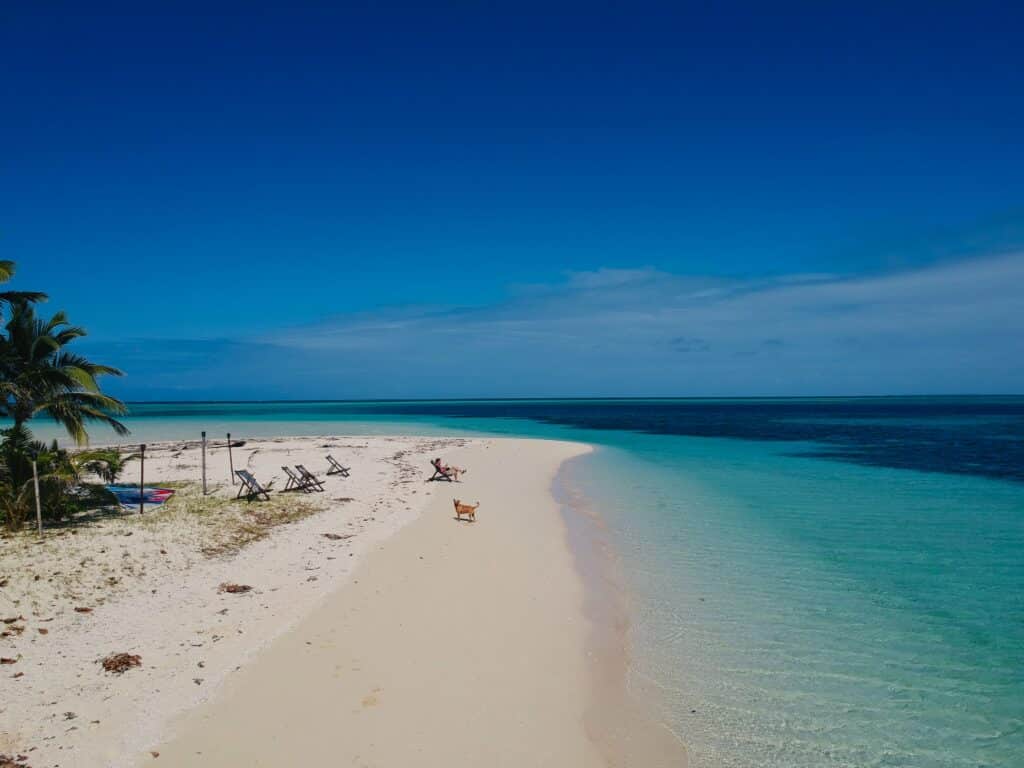The Fijian dollar is the official currency of Fiji and has been since 1969. It is issued by the Reserve Bank of Fiji. It is abbreviated as “FJ$” to differentiate it from other dollars around the world, and its official currency code is “FJD.” Each dollar can be subdivided into 100 cents.
The Fijian dollar comes in the following denominations:
Coins:
- 5, 10, 20, and 50 cents
- 1 and 2 dollars
Banknotes:
- 5, 10, 20, 50, and 100 dollars
5 Cool Facts About the Fijian Dollar
Here are some things you may not have known about the Fijian dollar.
1. Queen Elizabeth II was replaced with plants and animals.
Before 2012, Queen Elizabeth II was featured on Fijian currency in recognition of its membership in the Commonwealth of Nations.
When new banknote designs were introduced in 2012, the portrait of the queen was replaced with images of the nation’s flora and fauna.
Images include the kulawai (red-throated lorikeet), the gobi (a freshwater fish), and the tagimoucia, the country’s best-known flower and one that grows only on a single island.
2. Fiji has had dollar currency before.
Before 1968, as a British colony, Fiji used the pound currency. Back in the 1800s, however, Fiji had its own dollar. After Fiji gained independence from Britain, it returned to a dollar currency.
3. Fijian dollars are not printed or minted in Fiji.
While some countries print their own money and have their own mints, Fiji does not. The majority of Fiji’s banknotes are printed by De La Rue Currency in the United Kingdom. The majority of its coins are manufactured by the Royal Canadian Mint.

4. Fiji once issued a $7 banknote.
In 2017, to commemorate the Fijian 7s rugby team’s gold medal at the 2016 Summer Olympics in Rio de Janeiro, Brazil, a $7 bill was printed. The banknote featured the Olympians, the Prime Minister, and team officials. While the bill is a collectors’ item, it is also legal tender in Fiji.
5. Fijians used to have a barter system.
Before Europeans established a settlement in Fiji, Fijians operated on a barter system. They often traded livestock and locally grown fruits and vegetables for other things they needed. This system continued until the 1800s. European colonization led to the adoption of hard currency.
Exchange Rate of the Fijian Dollar
To see the current Fijian dollar–to–U.S. dollar exchange rate, check out today’s rate with Remitly.
About Fiji
Fiji is a collection of nearly 300 islands. Viti Levu and Vanua Levu are the most significant and home to most of the nation’s approximately 900,000 people. Of the remaining islands, nearly a third are uninhabited.
Today, Fiji is a popular destination for tourists, who come to the islands for their beaches, reefs, lagoons, and natural landscapes. Fijians have a reputation for kindness and hospitality, and tourism brings in a large proportion of the country’s revenue and supports many businesses.
Agriculture is also an important part of Fiji’s economy. Many indigenous Fijians grow their own food, and farmers produce sugar cane for export.
Humans have been living in what is now Fiji since the second millennium B.C. The original settlers were known as Austronesians and later Melanesians. There has also been a strong Polynesian influence throughout Fiji’s history given its location and proximity to other Polynesian islands in the Pacific.

Sending Money to Fiji
You can send money to Fiji with Remitly. New customers may be eligible for a special offer on their first transfer.
